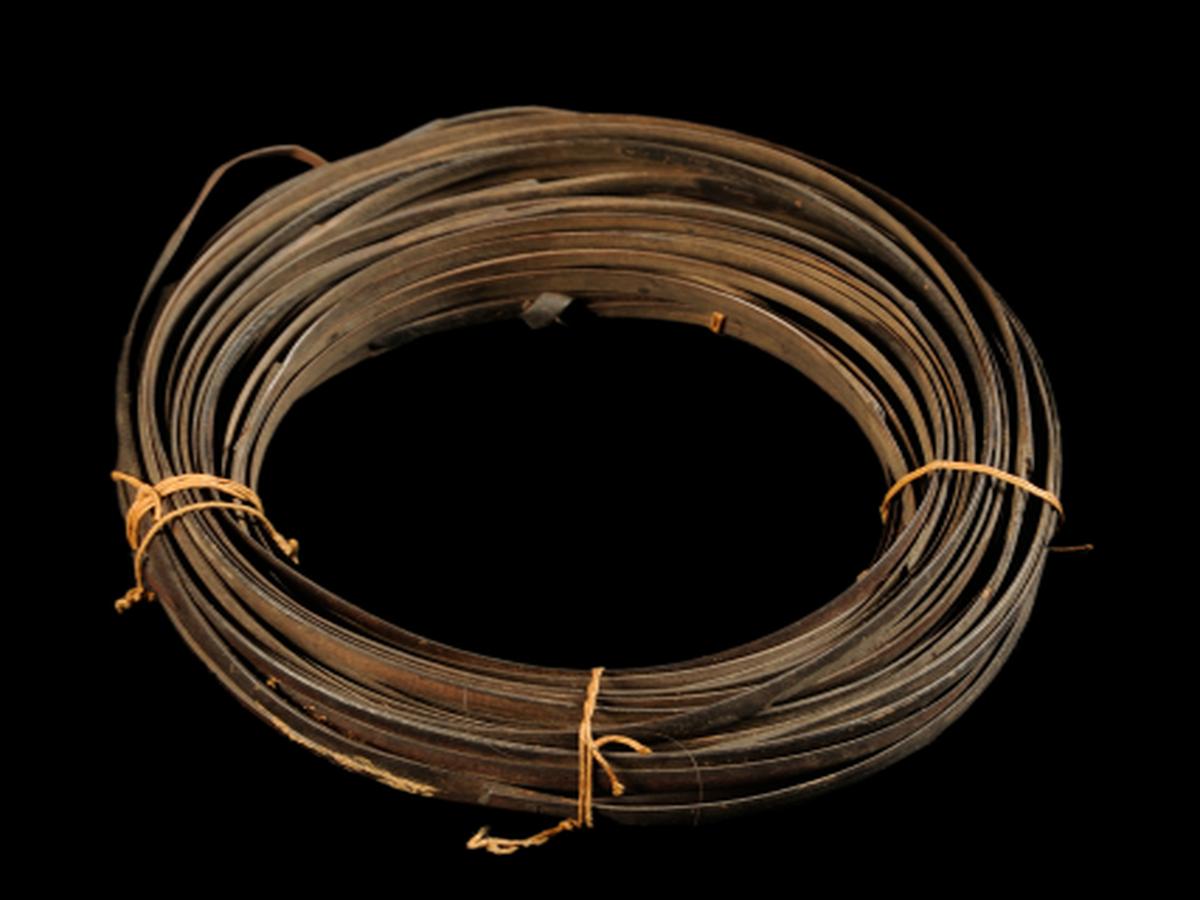State
Tribe Name
Art Type
short description
This waist belt belongs to the Abor tribe of Arunachal Pradesh and is an excellent example of indigenous resourcefulness and utilitarian design. It is made out of a single cane strip that is coiled into a circular bundle, manifesting a useful design around the waist.
Thumbnail

Filter Postion
Left
Filter Background
Off
Theme
Filter Header Image

content
Image

description
This waist belt belongs to the Abor tribe of Arunachal Pradesh and is an excellent example of indigenous resourcefulness and utilitarian design. It is made out of a single cane strip that is coiled into a circular bundle, manifesting a useful design around the waist.
Cane, which is a flexible yet strong natural material available freely in that very region, describes the tribe's sustainable use of local resources. The thin circular design ensures comfort while being worn and agile when engaging in daily activities or tribal performances. Though displaying a minimalist trait, such belts were considered Mult utilitarian as they served not only as brazenly visible personal adornments but also as emblems of the community and craftsmanship itself. In certain rituals or social contexts, waist belts could be paired with additional adornments like shells, beads, or skins to denote status or role.
Cane, which is a flexible yet strong natural material available freely in that very region, describes the tribe's sustainable use of local resources. The thin circular design ensures comfort while being worn and agile when engaging in daily activities or tribal performances. Though displaying a minimalist trait, such belts were considered Mult utilitarian as they served not only as brazenly visible personal adornments but also as emblems of the community and craftsmanship itself. In certain rituals or social contexts, waist belts could be paired with additional adornments like shells, beads, or skins to denote status or role.
Image Mode
landscape
promoted
On
Verified
Off
